Recent Research
One-step conversion of biomass to reduced graphene oxide at room temperature
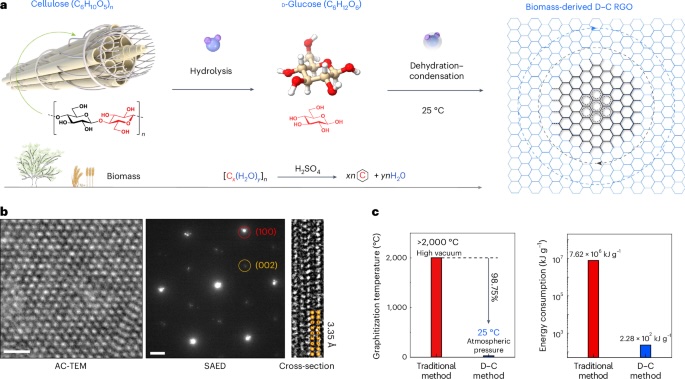 The Stoddart Group has developed a sustainable, low-energy method to produce graphene-related materials (GR2Ms) from biomass instead of graphite. Using only sulfuric acid at room temperature, this approach achieves a 33% yield while cutting energy use by 98%. This breakthrough offers a greener, scalable path for graphene production with wide-ranging applications. Nat Sustain 7, 1699–1708 (2024)
The Stoddart Group has developed a sustainable, low-energy method to produce graphene-related materials (GR2Ms) from biomass instead of graphite. Using only sulfuric acid at room temperature, this approach achieves a 33% yield while cutting energy use by 98%. This breakthrough offers a greener, scalable path for graphene production with wide-ranging applications. Nat Sustain 7, 1699–1708 (2024)
Nomadic Nanomedicines: Medicines Enabled by the Paracrine Transfer Effect (Perspective)
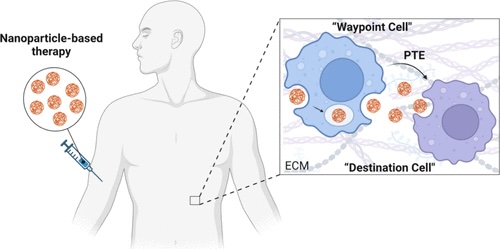 Nanomedicine research has focused heavily on how cells take in nanomaterials, but less on how they export them. This Perspective from Chad Mirkin and Natalie Artzi explores how controlled export can enhance treatments, introducing the “paracrine transfer effect” (PTE), where nanomaterials move between cells. Understanding PTE could lead to more effective therapies using specialized nanoparticles. ACS Nano, 19, 1 (2025)
Nanomedicine research has focused heavily on how cells take in nanomaterials, but less on how they export them. This Perspective from Chad Mirkin and Natalie Artzi explores how controlled export can enhance treatments, introducing the “paracrine transfer effect” (PTE), where nanomaterials move between cells. Understanding PTE could lead to more effective therapies using specialized nanoparticles. ACS Nano, 19, 1 (2025)
Dynamic supramolecular snub cubes
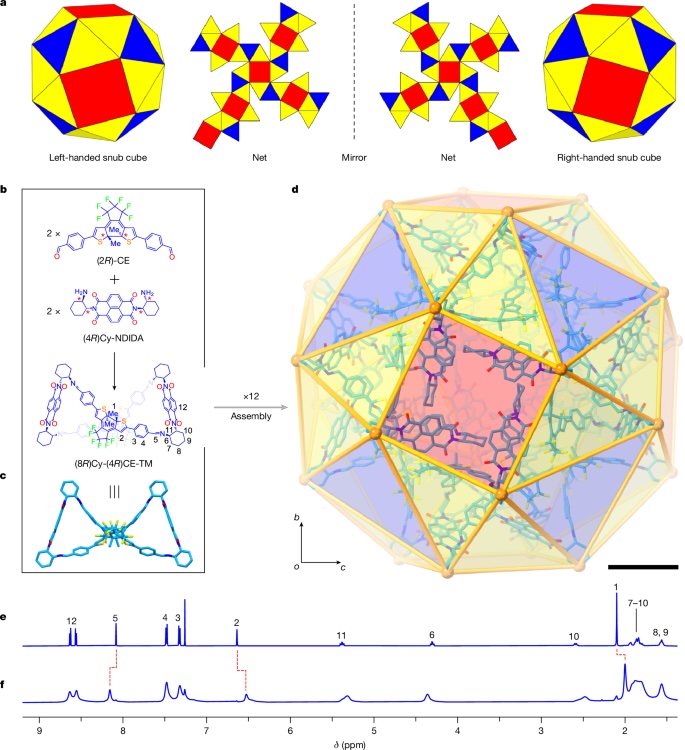 The Stoddart Group has created chiral, dynamic supramolecular snub cubes, mimicking the structure and function of biological capsules like viral capsids. These 5.1 nm cubes, assembled using helical macrocycles and weak hydrogen bonds, are capable of reversible photochromic behavior and photocontrollable elasticity. This innovation offers a new approach for building materials with tunable mechanical properties and guest-binding capabilities. Nature 637, 347–353 (2025)
The Stoddart Group has created chiral, dynamic supramolecular snub cubes, mimicking the structure and function of biological capsules like viral capsids. These 5.1 nm cubes, assembled using helical macrocycles and weak hydrogen bonds, are capable of reversible photochromic behavior and photocontrollable elasticity. This innovation offers a new approach for building materials with tunable mechanical properties and guest-binding capabilities. Nature 637, 347–353 (2025)
Power Strokes in Molecular Motors: Predictive, Irrelevant, or Somewhere in Between?
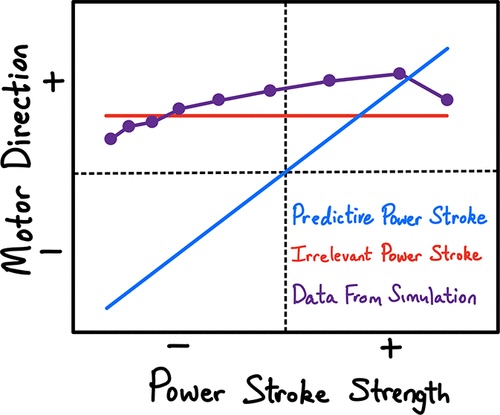 The Gingrich Group challenges the traditional "power stroke" theory used to explain molecular motor directionality. By simulating catalysis-driven motors, the study shows that while power strokes don't predict directionality, the relative stability of molecular conformations can influence motor bias. This insight helps explain why power stroke intuition still holds some practical value in motor design. J. Am. Chem. Soc.147, 1 (2025)
The Gingrich Group challenges the traditional "power stroke" theory used to explain molecular motor directionality. By simulating catalysis-driven motors, the study shows that while power strokes don't predict directionality, the relative stability of molecular conformations can influence motor bias. This insight helps explain why power stroke intuition still holds some practical value in motor design. J. Am. Chem. Soc.147, 1 (2025)
Room-Temperature Optical Spin Polarization of an Electron Spin Qudit in a Vanadyl-Free Base Porphyrin Dimer
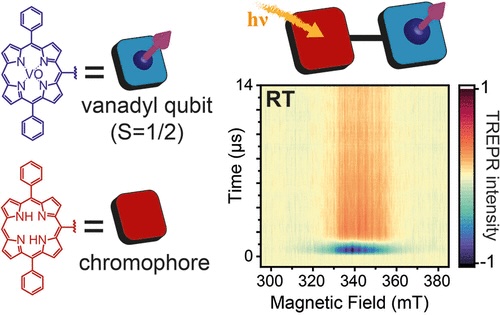 The Wasielewski Lab explores the use of photoexcited organic chromophores for quantum information, extending previous work to a porphyrin dimer. Femtosecond absorption and time-resolved electron paramagnetic resonance (TREPR) reveal the formation of a long-lived, spin-polarized quartet state. This discovery could enable photoinduced triplet states in porphyrins for spin-based quantum applications, including qubit polarization. J. Am. Chem. Soc.147, 1 (2025)
The Wasielewski Lab explores the use of photoexcited organic chromophores for quantum information, extending previous work to a porphyrin dimer. Femtosecond absorption and time-resolved electron paramagnetic resonance (TREPR) reveal the formation of a long-lived, spin-polarized quartet state. This discovery could enable photoinduced triplet states in porphyrins for spin-based quantum applications, including qubit polarization. J. Am. Chem. Soc.147, 1 (2025)
